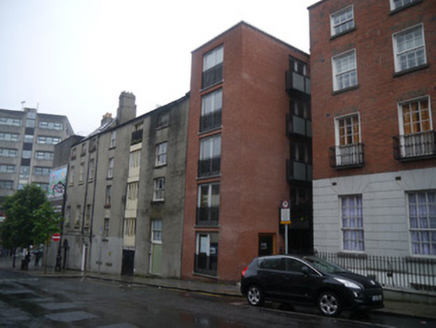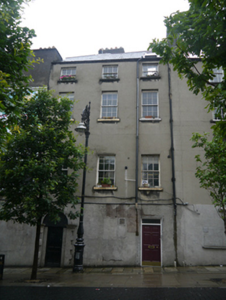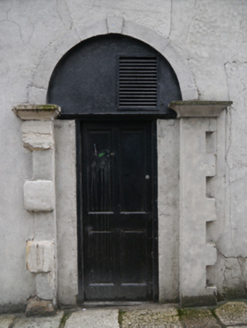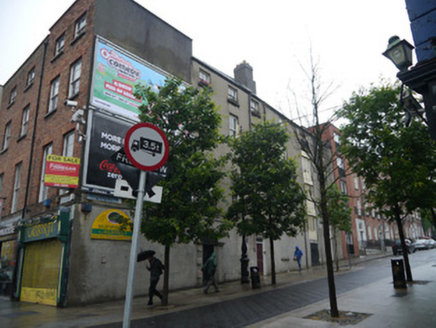Survey Data
Reg No
50060397
Rating
Regional
Categories of Special Interest
Architectural
Original Use
House
In Use As
Apartment/flat (converted)
Date
1780 - 1800
Coordinates
315927, 235099
Date Recorded
01/09/2014
Date Updated
--/--/--
Description
Attached three-bay three-storey former house, built c.1790. Pitched, artificial slate roof, modern roof-light window to front pitch and angled grey ridge-tiles. Smooth rendered and shouldered chimneystack to north party wall and red brick chimneystack to west party wall, with replacement clay pots. Half-round cast-iron rainwater goods, on masonry driven brackets. Walling unpainted, generally ruled-and-lined rendered, smooth on ground floor. Square-headed window openings with painted stone sills, smooth rendered and painted reveals, and six-over-six pane sliding timber sashes, with three-over-three pane to upper floor. Windows generally without horns, several frames refurbished/replaced, iron window box bars remain. Pair of former window openings on ground floor blocked and rendered over. Round arch to left doorcase, with raised and stepped rendered stone architraves, (uneven and with some exposed limestone), moulded stone cornicing and plain round arch. Modern replacement door, fanlight blocked, rendered and painted, with metal vent grille inserted. Right doorway is square-headed with plain reveals and architraves, replacement timber door and over-light. Street-fronted, abutted to south by 145 Parnell Street and similar building to north, an early nineteenth century former warehouse. .
Appraisal
A late eighteenth-century house, occupying a prominent position on the southern entrance to North Great Georges Street. Although it appears as a stand alone house it was built as a return to 145 Parnell Street (50010982) and served as the domestic entrance to the premises. The warehouse (50060396) to the north also formed part of the complex. This combination of business premises, domestic accommodation and warehouse is particularly rare. Despite alterations to the ground floor openings and the loss of some original fabric, the building makes an important contribution to the eclectic character of this section of the Georgian city.







